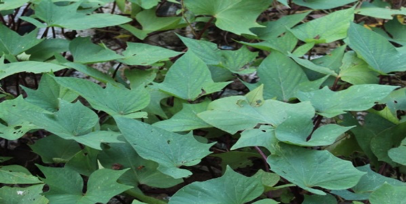Preparing for the Wet
The heat is steadily coming on and our gardens are showing the effects, tomatoes are almost finished in most gardens and greens are starting to go to seed and looking weary in the middle of the day.
If you have had some good crops during the season it is worthwhile to save some seeds. I am finding that many crops are stronger in the second+ generations of seed grown and saved from year to year. With tomatoes it is very easy. Select several fat, juicy well ripened tomatoes of the same kind. Cut them in halves or quarters and scoop out the seeds. Rinse the seeds in a sieve under the tap and then take several thicknesses of paper towel and spread the seeds to dry. Put the variety of seed and the date on a corner of the paper. Leave to dry for a couple of days and then secure into a jar or ziplock bag for next season.
For greens and herbs, the seeds need to dry on the bush, so it is necessary to watch and wait for the seed heads to develop. If they all dry at roughly the same time the head can be cut and put into a paper bag, secured with a string and hung in the shade for the drying process to be complete. Again, store in a waterproof bag or container and and label. Many people like to keep their seeds in the fridge and this is good if you have the space available but a cool dry place away from the light is fine.
Next, attention needs to be turned to the beds. The easiest method of dealing with the crop leftovers or patches of weeds is to wet the area thoroughly, cover with cardboard or newspaper, wet again and then cover with a thick layer of manure and mulch. Again, water thoroughly and sprinkle through a variety of seeds such as mustard, mung beans, and peanuts. This is essentially on site composting, and green manuring. It will provide ground cover to protect the soil and nitrogen from legumes and plenty of organic matter to dig in for next years crops. If you have chickens you can let them into the garden to consume the leftovers and fertilize the beds this does not work well if you have naturally raised beds as the gang usually flattens everything leaving the ground bare and exposed.
If you have raised beds with wood or sheet iron surrounds these can be filled with leaves and manure and left to rest or planted with pumpkin or watermelon or green manures to grow through the wet. With the sheet iron raised beds it is often useful to plant the outside with lemon grass, this will help to insulate the bed and prevent the soil inside with its precious micro-organisms baking in the heat. After the wet, the lemon grass can then be used as mulch.
Another useful cover plant is the sweet potato vine. This can grow rampant during the wet, the tips of the vine are a tasty green vegetable and of course it only takes two or three months for the sweet potatoes to develop. It is very useful as a cover crop to protect the soil in the hot time.
In preparing the beds for the wet season rest or growing of green manure an important amendment to use is ‘Biochar’ this has been discussed at length in a previous article and is worth ‘googling’ for more information. In short biochar is charcoal that has been soaked in liquid manure, it provides ‘apartment blocks’ in the soil for all the tiny organisms that help to create healthy and productive soil. One of the biggest problems we have in the wet season is the depletion of the soil, it is left flat and lifeless unless there is lots of organic matter and the biochar to keep it soft and friable.
It is important that the charcoal is soaked in liquid manure or worm castings before putting it into the ground. This ‘colonises’ the charcoal with bacteria and micro-organisms. When raw charcoal is used it takes time for the ‘apartment blocks’ to be filled and the newly resident microbes start to reproduce. Therefore, there is a waiting period for the micro-organisms to migrate into the charcoal from the surrounding soil, if however the tenants are already installed through the soaking in liquid manure they are ready to go out and work in the soil around them, increase and multiply and thus provide food and stimulation to the roots of plants.



